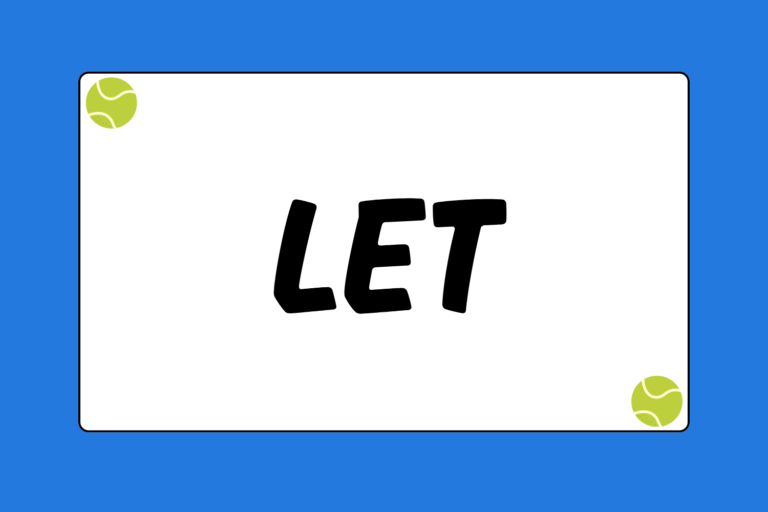Tennis is all about consistency, so it can seem counterintuitive to alter your preferred style of play mid-match. In doubles, most partners build their team based on their respective strengths, and then stick to their strategy from one match to the next. For example, teammates normally decide who’s best suited to play the deuce court, and they generally have the stronger server serve first. In terms of positioning, teams almost always line up one player at the net and the other at the baseline.
The Australian doubles formation — although seldom used — challenges these accepted norms, but can be a very effective approach. This guide explains the Australian doubles formation, and breaks down how it can make your team more formidable.
Familiar Formation
In the standard doubles formation, the server stands out wide along the baseline, a few feet away from the doubles alley. His partner lines up in the center of the service box on the opposite half of the court, and he should crowd the net. Certain scenarios might force the net player to scoot back towards the middle of the box, though. For example, if his net game isn’t particularly strong, or his partner’s serve is easy to attack.
Not all doubles teams use this formation for each and every point, but it’s by far the most popular way to space out the two players. In addition to being extremely effective, this classic strategy is also ideal for beginners or newly-formed teams. But if you’re struggling to win points and your opponents appear to have the upper-hand, you should consider tweaking your strategy.
Mental Edge
Keep in mind that the server should almost always crash the net after his serve — especially after first serves. Service games put your team at a major advantage, so a good serve should give the server enough time to move in to the net. With both partners at the net, it’s much easier to close out the point.
The Aussie Way
The Australian doubles formation is the best alternative to the standard formation. Here, the net player stands near the center line of the service box, and the server lines up close to the center hash mark on the baseline — similar to the standard singles serving position. Here’s a typical scenario, with the server beginning in the deuce court:
- The server lines up near the center hash mark.
- The net player lines up near the center service line and shades slightly to the ad court.
- Once the ball’s in play, the server moves diagonally across the court towards the ad service box.
- As the server crashes the net on the ad court, the net player slides over into the deuce service box, looking to close out a crosscourt return.
This is a typical strategy, but there are many different ways to use the Australian formation, which are explained in the following section.
Mix It Up
Aggressive net players should thrive in the Australian formation. As you grow more comfortable with this approach, you can alter your strategy and keep the opposing team guessing. For example, here’s another variation of the Australian formation:
- The server begins in the deuce court with the net player on the center service line, slightly shaded to the ad court.
- Immediately after the serve, the net player tracks the return and moves into the ad court.
- The server stays in the deuce court and can either rush the net or stay at the baseline.
How you choose to use the Australian formation is up to you and your teammate. Vary your approach, keep your opponents on their toes, and stick with whatever works. Different teams have different strengths, so search for the strategy that works best and talk to your partner.
Ultimately, the serve return dictates how you and your partner move, so you need to be ready to run. Either way, you’ll need to commit to one direction, so both players need to be on the same page.
Benefits
There are two main benefits to the Australian formation:
- It can confuse your opponents.
- You take away crosscourt returns.
Surprise Attack
Because so few teams actually use the Australian formation consistently, most opponents don’t prepare for or know how to handle it. This element of surprise can be enough to throw them off of their game. The returner might instinctively hit a crosscourt return — which should be an easy putaway for the net player — or commit an unforced error. Whether you choose to use it for one point, a whole game, or an entire set, your unorthodox formation can easily disrupt your opponents’ rhythm.
Crosscourt Combat
In general, the serve returner will try to avoid the opposing net player — no matter the formation. Unless the serve is an easy sitter that’s begging to be crushed, opponents generally keep returns crosscourt and towards the server in the standard formation. Hitting crosscourt is less risky for several reasons:
- The server’s less likely to close out the point quickly.
- The serve returner has more court to keep the ball in play.
- It buys the serve returner some time to eventually crash the net.
The Australian formation can potentially minimize the aforementioned advantages by forcing the opponents into a down-the-line shot. While you’re definitely running the risk of setting up your opponent for an easy down-the-line winner, you’re also forcing the returner into a difficult shot. He’ll have more net to clear (the net is a half-foot taller down the line) and less court to work with (the court shrinks as the ball travels in a straight line, opposed to corner-to-corner on a crosscourt shot).
Although the strategy is somewhat risky, the Australian formation can lead to some easy points when smoothly executed. Ideally, you and your partner should dedicate some practice time to the formation before using it in a match — familiarity is key.
Hot Tip: Down the T
When using the Australian formation, the server should generally try to keep serves down the T. The server has to be wary of down-the-line winners, and serves out wide can leave you much more vulnerable for a clean winner. While you don’t want your serve to be too predictable, place the majority of your serves down the T and bait the returner into shots down the middle.
Speak Up
The Australian doubles formation offers some major benefits, and it’s arguably the best alternative doubles formation. However, there are some strings attached. A poor serve leaves you particularly vulnerable — more so than the standard formation. Likewise, using the Australian formation on a second serve can lead to an easy winner for your opponent. Because of these drawbacks, communication is absolutely necessary. You should always be vocal in doubles, but the Australian formation involves a higher-degree of communication and anticipation.





